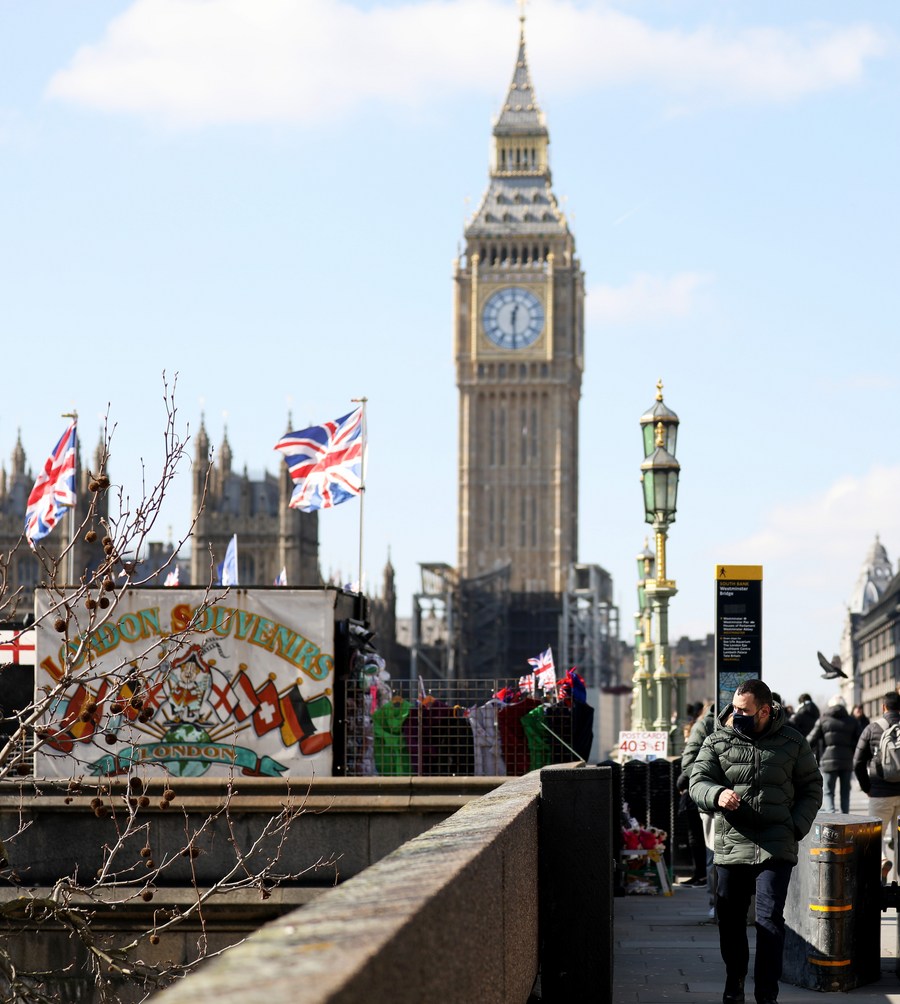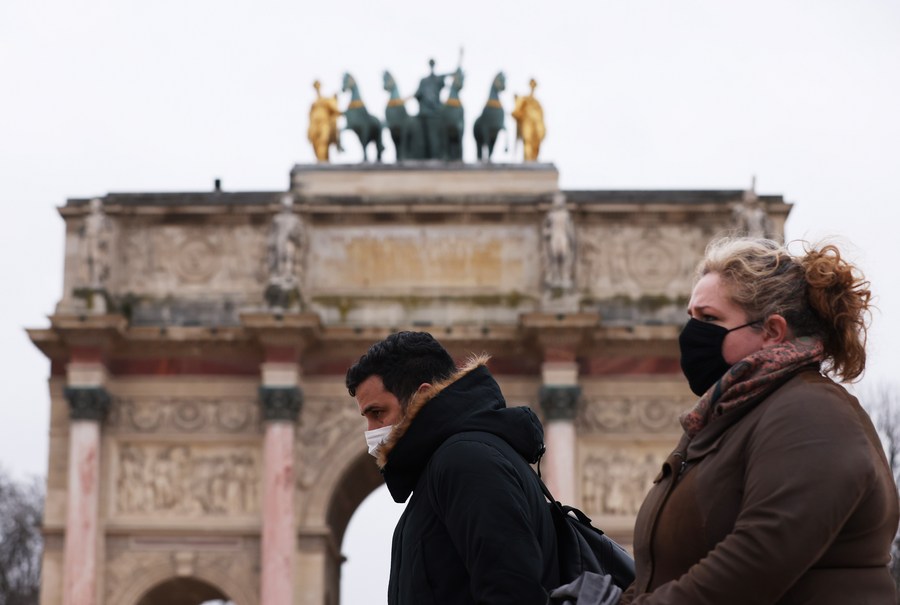
People are seen on Times Square in New York, the United States, March 7, 2022. (Xinhua/Wang Ying)
BEIJING, March 16 (Xinhua) -- More than two years into the COVID-19 pandemic, the global infections and deaths have waxed and waned in different parts of the world.
As the Omicron variant of the coronavirus appeared more contagious and less lethal, several Western countries, where cases have been falling in recent weeks, decided to lift their restrictions.
In its latest report issued on Tuesday, the World Health Organization (WHO) said the number of new weekly COVID-19 cases increased by 8 percent last week, as compared to the week prior to it, after "a consistent decrease" in the caseload since the end of January.
"The number of new deaths continued a decreasing trend," globally down by 17 percent last week as compared to the week from Feb. 28 to March 6, the WHO added.
In the United States, the worst-hit country with the highest caseload and the most deaths in the world, President Joe Biden called on Americans to return to the office and "fill our great downtowns again" in his State of the Union Address earlier this month.
The United States has recorded around 79 million cases and over 960,000 deaths, while daily cases continue to drop, according to the U.S. Centers for Disease Control and Prevention.
"We currently have about 35,000 cases in this country. We expect some fluctuation, especially at this relatively low level, and, certainly, that to increase," White House Press Secretary Jen Psaki said at a press briefing on Monday.

A man wearing a mask walks past Westminster Bridge in London, Britain, March 7, 2022. (Xinhua/Li Ying)
Across the Atlantic, the British government said Monday that all remaining COVID-19 international travel restrictions will end Friday to make going on holiday easier for the Easter school vacation.
Transport Secretary Grant Shapps said the changes will mean people "can travel just like in the good old days."
Britain recorded an average of 73,310 cases per day last week, according to COVID-19 statistics from The New York Times. The country's caseload has increased by 77 percent from the average two weeks ago, while deaths have fallen by 10 percent.

People wearing masks walk past the Arc de Triomphe du Carrousel in Paris, France, Jan. 19, 2022. (Xinhua/Gao Jing)
France also lifted most coronavirus bans on Monday, ending the need to wear masks in schools, offices and shops, and allowing the unvaccinated back into bars, restaurants and cinemas.
Official data showed COVID-19 cases in France have increased by 23 percent from the average two weeks ago, while deaths have decreased by 37 percent.
On Tuesday, Dutch Health Minister Ernst Kuiper announced that the government would further scale down COVID-19 rules from next Wednesday. The mask obligation in public transport will disappear, and a negative test is no longer required at events with more than 500 participants.

People watch hot air balloons during the annual Canberra Balloon Spectacular festival in Canberra, Australia, March 14, 2022. (Photo by Liu Changchang/Xinhua)
In Oceania, daily COVID-19 cases have been falling in Australia, but still rising in New Zealand.
Australia said on Tuesday that it is about to ease its entry ban for international cruise ships next month, bringing an end to all major COVID-19 travel bans. Last month, Australia reopened its airports to vaccinated international travellers.
New Zealand Prime Minister Jacinda Ardern said Wednesday that the country was "ready to welcome the world back" as the nation continued to ease its coronavirus restrictions.
"Closing our border was one of the first actions we took to stop COVID-19 two years ago. It did the job we needed. But now that we're highly vaccinated and predicted to be off our Omicron peak, it's now safe to open up," she said. ■












